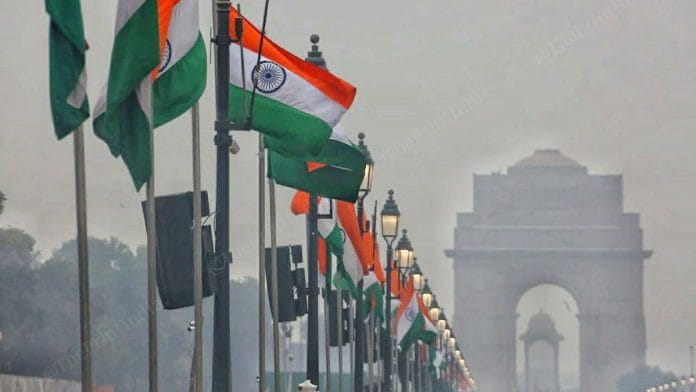Thank you dear subscribers, we are overwhelmed with your response.
Your Turn is a unique section from ThePrint featuring points of view from its subscribers. If you are a subscriber, have a point of view, please send it to us. If not, do subscribe here: https://theprint.in/subscribe/
The other day I was filling up my car at a petrol pump in Bengaluru. I was speaking with the attendant there in Hindi. Some youth from a line waiting to fill their motorcycles accosted me and asked me to speak in Kannada. I said, I will do so if they stripped out of their “western pants and shirts” and gave away their bike, all adopted from an alien culture. They quietly pulled away.
India has adopted a lot of practices, cuisine, dress et al from the Mughals and the British. The adoption in the civil society has been largely seamless as almost all of them have been by choice. But these are all materialistic adjustments. The bigger question is where do we look for value systems in India? Talking just about India, value systems had existed in India since millennia, much before religions and foreigners conquered and settled down in the Nation. Similarly, value system, symbolisms and strong societal practices too precedes centuries before religions and new cultures entered India from the West – both, far West and near West.
Two thousand years ago there was no religion in India. There were no Hindus. There were only the Indian and the developing Buddhist philosophies. The Brahmins dominated the society as they were close to the seat of power. The kings, even from the days of Pharaohs of Egypt nearly six thousand years ago, needed the priests in their courts to tell the people that they were the representatives of the Gods sent to Earth to rule over them. Gods did not require religions in those days. In India, when the brahmins close to the seat of power, started to dominate society the people became restless, paving the way for Buddhism to enter the courts of the rulers.
Ever since Independence, parts of India have felt neglected by the power center in Delhi for various reasons. From the erstwhile state of Jammu and Kashmir in the North, The North Eastern region now as seven states and to a great extent the South. Within a couple of decades since 1947 the INC, which is regarded to have been in the forefront of our fight for Independence, lost its sheen in the Southern states starting with Kerala in the late 1950s. Other southern states followed in the next decades. Strong regional parties also emerged in Maharashtra and the border state of Punjab. In such a vast and diverse country like India with a population of over a billion, symbolism is definitely a binding factor – unless one follows either China as regimentation (CCP) as a forced unifying factor or like Pakistan with the rulers there showing India as sworn enemy for life to get their people together.
Inclusiveness to development and progress of India is not about religions but about regions. The demography of the various regions in our Nation is as diverse as it can get. While real action on ground for inclusiveness is the key, until we get there – which is a long way off – symbolic show of inclusiveness is the key. For instance, in the past, our leaders when visiting regions away from Delhi, wore the headdress of and danced to the tunes of the locals as a symbolic gesture.
We have not seen a national leader emerge from the marginalized states. There were a couple of PMs as negative choices in different circumstances. Probably there is cause for visible indications of regional inclusiveness. I say this to only bring home a point of inclusiveness and not as a eulogy or criticism of organisations or individuals.
I recall an incident in 2003. As officers of the Indian Army, we were all in our blue patrol dress, a ceremonial rig. As a pre-dinner routine a few senior officers of the Indian Army were making small talk with the commander. A colonel in a tight-fitting patrol dress broached the subject of ceremonial dresses with all the accoutrements and their futility in the ‘modern’ times. The General, looked at the colonel and then sweeping a glance at all of us gathered around asked – “How do I stand out in this crowd without my epaulettes and accoutrements? If I do not wear them, I will not be recognized as your commander and as your leader, whereas a Lalu Prasad Yadav will be recognized as a leader even in his vests. This is not to cast aspersions and belittle the significance of military leadership or any leadership whose real qualities are beyond symbolism. Yet sometimes what is felt and intended need to be seen, especially in diverse organisations.
Tailpiece: The point is for local leaders functioning within a clan symbolism may be unimportant, but for national level leaders in India, symbolism is very important to hold the nation together with a uniform (pun unintended) value system, until we get there.
These pieces are being published as they have been received – they have not been edited/fact-checked by ThePrint.


